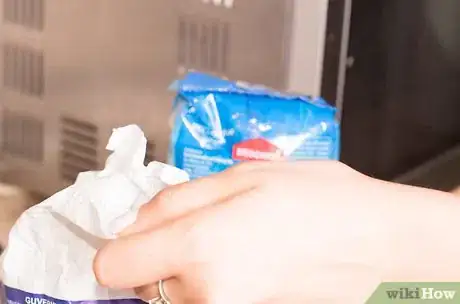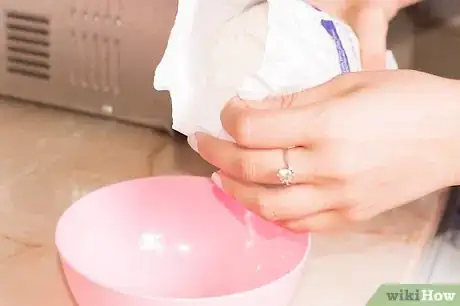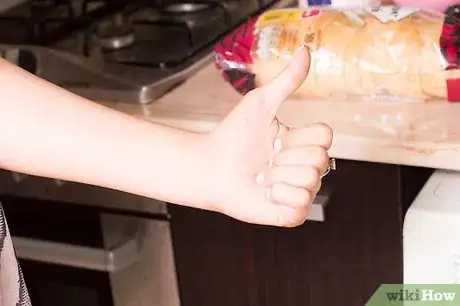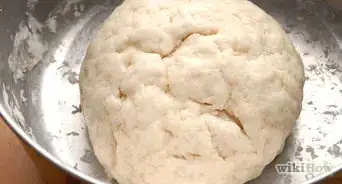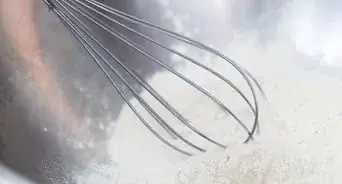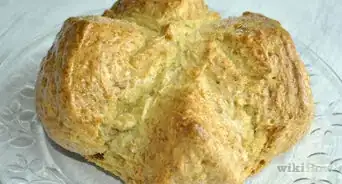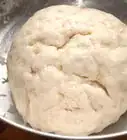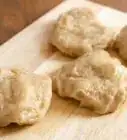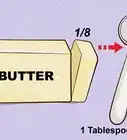wikiHow is a “wiki,” similar to Wikipedia, which means that many of our articles are co-written by multiple authors. To create this article, 10 people, some anonymous, worked to edit and improve it over time.
There are 7 references cited in this article, which can be found at the bottom of the page.
This article has been viewed 141,813 times.
Learn more...
Gluten is a protein found in wheat, barley, and rye. It adds elasticity to bread dough and absorbs moisture to add structure and make the finished product moist and fluffy. White bread flour has more gluten than whole wheat, which is why whole wheat breads tend to be denser and more crumbly. Other flours, such as rye and all-purpose wheat, also have lower gluten contents and tend to make drier, more crumbly breads. However, you can increase the gluten content by adding vital wheat gluten to your flour.[1]
Steps
-
1Add the vital wheat gluten on a per-recipe basis and not to the entire bag of flour. The standard gluten/flour ratio is 1 tbsp. (15 ml) for every 2 to 3 cups (473 ml to 711 ml) of flour.[2]
-
2Mix in the vital wheat gluten before you add the other dry ingredients once you have determined how to add gluten to flour.[3]
- Add your flour to a bowl, add the gluten and mix it together with a fork or pour it into a sifter and sift it into a fresh bowl.
Advertisement -
3Combine your wet ingredients per the instructions in your bread recipe.[4]
- Once you have mixed the gluten into the flour you can use it as you would any other flour.
Community Q&A
-
QuestionCan vital wheat gluten be added to white whole wheat pasta dough recipes?
 Mark BlackwellCommunity AnswerUnless the flour you are using is specially made, all flours contain gluten. Bread flours generally contain added gluten, so when you supplement all-purpose flour with your own essential gluten protein, you are making it into bread flour. Whole wheat, rye -- it matters not. Gluten is what holds a dough together when it is under stress during bread making. Now, whether you should add it to pasta dough or not is another matter. Pasta is basically soggy, unleavened bread. Since you're not trying to make it rise, there wouldn't be any use in trying to fortify its ability to make gluten strands.
Mark BlackwellCommunity AnswerUnless the flour you are using is specially made, all flours contain gluten. Bread flours generally contain added gluten, so when you supplement all-purpose flour with your own essential gluten protein, you are making it into bread flour. Whole wheat, rye -- it matters not. Gluten is what holds a dough together when it is under stress during bread making. Now, whether you should add it to pasta dough or not is another matter. Pasta is basically soggy, unleavened bread. Since you're not trying to make it rise, there wouldn't be any use in trying to fortify its ability to make gluten strands. -
QuestionCan I add gluten to cowpea flour to bake bread?
 Community AnswerYes, you can.
Community AnswerYes, you can. -
QuestionIs gluten the same as bread improver?
 Community Answer"Improver" is a general term that is applied to a number of things, from diastatic malt powder to nuts, grains, juice, etc., and yes, gluten. "Bread improver" is anything you add to your bread that "improves" it.
Community Answer"Improver" is a general term that is applied to a number of things, from diastatic malt powder to nuts, grains, juice, etc., and yes, gluten. "Bread improver" is anything you add to your bread that "improves" it.
Warnings
- Do not add gluten to your flour if you are using gluten-free flours for recipes specific to celiac disease or gluten intolerance.⧼thumbs_response⧽
Things You'll Need
- Vital wheat gluten
- Measuring spoon or cup
- Bowl
- Fork or flour sifter
References
- ↑ https://www.cooksillustrated.com/how_tos/5867-vital-wheat-gluten
- ↑ https://www.thekitchn.com/vital-wheat-gluten-what-is-it-84612
- ↑ https://www.savorysimple.net/how-to-make-cake-flour/
- ↑ https://www.epicurious.com/expert-advice/bread-ingredients-guide-to-flours-for-homemade-dough-article
- ↑ https://www.thekitchn.com/bread-baking-tip-how-to-tell-w-156772
- http://www.foodsubs.com/Flour.html
- http://www.cookeryonline.com/Bread/flour.html
